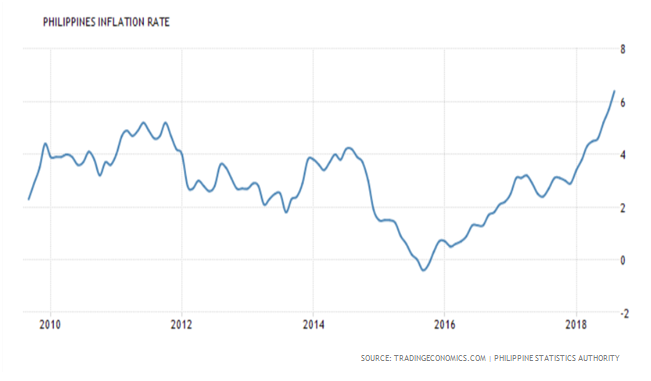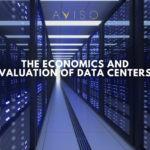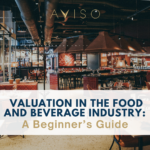
For business owners, it’s not just a threat – it’s apparently an opportunity as well:
Inflation in the Philippines
The future of Philippine economy is at stake in today’s environment of aggressive inflation rate increases – it immediately caught fire on different platforms of media. Everyone from CEOs to jobless Filipinos and even owners of long-established companies were alarmed by the development. The Philippine Statistics Authority (PSA) announced that the country’s inflation rate as of August 2018 has surged to 6.4% – the fastest and the highest in Philippine history since 2009.
Current foreign investors in the country are slowly getting into a state of panic while target foreign investors on the other hand, are beginning to think if investing in the Philippines for business is still a good idea. Nevertheless, Albay representative and House Committee on Economic Affairs Vice President Joey Salceda, was confident enough to say during an interview with CNN Philippines’ The Source, that with just by importing more rice, increase in the inflation rate of the country will no longer continue, and that it is by far their best plan to counter the horrific state of the nation’s economy.
While the government is in the midst of resolving the crisis in the country, there are millions of Filipinos with one common question that has no certain answer until now. What drives inflation in the Philippines anyway?
Price hikes, known as inflation, significantly impacts the cost of living by directly increasing the cost of goods and services, the cost of doing business, via loans, government bond yields, corporate bond yields by increasing the base interest rate or cost of money. Inflation fundamentally impacts every aspect of the economy. Inflation causes the country’s currency to weaken, thus requiring more money to import the same amount of goods and services – along with economic growth and public deficits, inflation is among the most damaging of economic woes for any country; Zimbabwe for example, abandoned their currency back in 2009 after severe damage caused by hyperinflation. There are a lot of factors that affect the value of money of an economy, but for the Philippines, the most problematic is the ratio of supply and demand. The population of the Philippines continues to grow, which translates to more manpower for producing goods and services for Filipino consumers. Unfortunately, that is not the case. Filipino farmers are ageing, and none from younger generations are interested in taking their place; hence the country is having a hard time in producing goods and services needed, which as a result, suppresses Philippine economic growth. Moreover, the government lacks a clear policy for setting forth laws and regulations to keep the cost of living low. Arable lands continue to be converted to more valuable residential or commercial land. As a result, less land for planting results in a decrease in agricultural scale economy, increasing the price of crops. Lack of investment in farm-to-market roads and irrigation have resulted in meat and poultry products being more expensive than healthier fruits and vegetables. Lack of an efficient public transport infrastructure directly increases labor costs and lowers labor productivity.
In times like this, when the value of goods and services are ever escalating, we should not rely a hundred percent on the government. Society should take this opportunity to urge their representatives to act on the many issues concerning rising prices as it is in the interest of everyone to manage inflation. On the other side of the coin, rising prices have always been a market signal to the private sector to increase production of goods and services since the assumption is that profits increase when prices increase. While this is mostly true, private sector adjustment will take time to take effect and what matters most is that price increases are gradual rather than the high and sporadic rates the Philippine economy is currently experiencing.
The key to a more even-keeled approach to naturally increasing prices to encourage market growth is the judicious balance between monetary policy and public policy vis-à-vis the structural needs of the economy. This requires a more proactive management backed by sound economic research.










